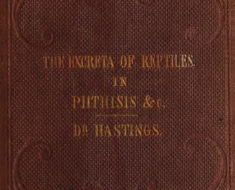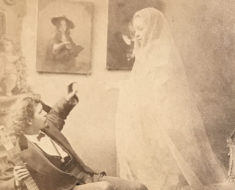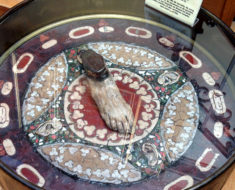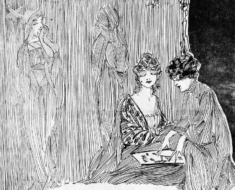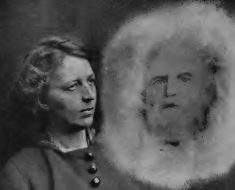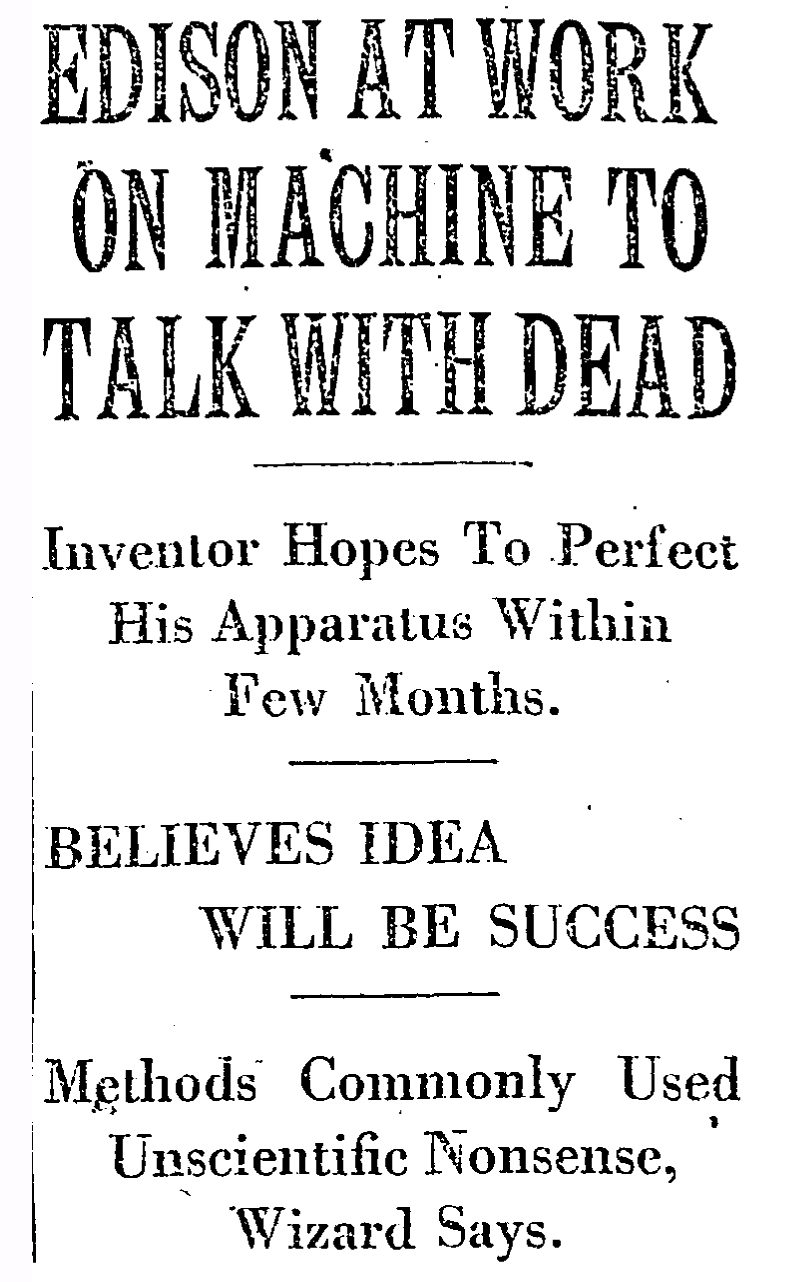
Thomas Edison planned to invent a machine to talk to the dead
In October of 1920, Thomas Edison announced that he was working on a new machine that would allow people to talk to the dead. Naturally, people were optimistic.
After all, this was the man who, decades earlier, figured out a way to record and playback the human voice. At the time, such a thing seemed completely magical. If the Wizard of Menlo Park could create a phonograph, why not a telephone to the afterlife?
Spiritualism had grown in popularity following the mass casualties of World War I, not unlike the mania that spread following the Civil War. The demand to speak with lost loved ones was high, and mediums eager to supply hope sprouted up wherever there was a buck to be made. Séance tables across the country were rapped and levitated, ectoplasm spewed from mediums, planchettes spelled out messages on ouija boards and many other effects led enthusiastic spiritualists to believe that communication with the afterlife was possible. Adding to the excitement were staunch believers Sir Arthur Conan Doyle, creator of Sherlock Holmes, and English physicist Sir Oliver Lodge. Both wrote extensively on spiritualism, with Doyle having been firmly convinced he’d spoken with his deceased son.
If Edison was going to talk to the dead, it was going to be done through science. As he told B.C. Forbes of American Magazine in 1920, “The methods and apparatus commonly used and discussed are just a lot of unscientific nonsense.”
Why, he wondered, would any personality in the afterlife bother communicating in such prankish and primitive ways?
Edison didn’t offer Forbes specific details of how his device would work, but he explained, “I am proceeding on the theory that, in the very nature of things, the degrees of material or physical power possessed by those in the next life must be extremely slight; and that, therefore, any instrument designed to communicate with us must be super-delicate—as finely responsive as human ingenuity can make it.
“For my part, I am inclined to believe that our personality hereafter will be able to affect matter. If this reasoning be correct, then if we can evolve an instrument so delicate as to be affected, or moved or manipulated,—whichever term you want to use—by our personality, as it survives in the next life, such an instrument, when made available, ought to record something.”
He added that, should he succeed, the first spirits to take advantage of the device would likely be telegraphers or scientists or anyone else with experience in the use of delicate instruments and electric currents.
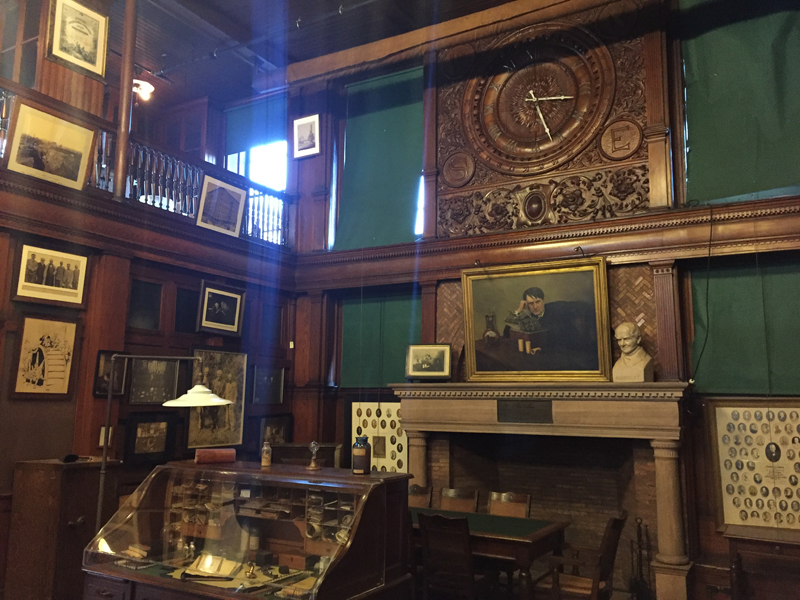 Thomas Edison’s office, where ideas were born.
Thomas Edison’s office, where ideas were born.
Was Edison making a joke? Was he merely looking to grab headlines during the Spiritualism craze?
Many believed this was the case, but a 1933 article in Modern Mechanix magazine reported on a secret demonstration in his darkened laboratory with several scientists present. According to the article, “Edison set up a photo-electric cell. A tiny pencil of light, coming from a powerful lamp, bored through the darkness and struck the active surface of this cell, where it was transformed instantly into a feeble electric current. Any object, no matter how thin, transparent or small, would cause a registration on the cell if it cut through the beam.”
The team of scientists spent hours closely watching Edison’s prototype for any sign of movement from beyond. But none came.
Still, Edison maintained his belief that some form of afterlife may exist. Months after the 1920 article, the inventor added to his theories on what constitutes life in an interview with the New York Times. Edison explained that he believed the human body to be composed of 100,000,000,000,000 (that’s 100 trillion) infinitely small life units. Each being beyond microscopic, and beyond what the human mind can conceive.
“I believe that life, like matter, is indestructible,” Edison said. “There has always been a certain amount of life in this world, and there will always be the same amount. You cannot create life; you cannot destroy life; you cannot multiply life.
“I believe our bodies are composed of myriads and myriads of infinitesimal entities, each in itself a unit of life, which band together to build a man.
“In our bodies these entities constantly rebuild our tissues to replace those which are constantly wearing out. They watch after functions of the various organs, just as the engineers in a power house see that the machinery is kept in perfect order. Once conditions in the body become unsatisfactory in the body, either through a fatal sickness, fatal accident or old age, the entities simply depart from the body and leave little more than an empty structure behind. Being indefatigable workers, they naturally seek something else to do. They either enter into the body of another man or even start work on some other form of life. At any rate, there is a fixed number of these, and it is the same entities that have served over and over again.”
In the final chapter of the posthumously published The Diary and Sundry Observations of Thomas Alva Edison, the great scientist expanded on his thoughts, and even postulated that human life is alien in its origin. “I cannot believe for a moment that life in the first instance originated on this insignificant little ball which we call the Earth—little, that is, in contrast with other bodies which inhabit space,” Edison wrote. “The particles which combined to evolve living creatures on this planet of ours probably came from some other body elsewhere in the universe.”
Edison died in October of 1931, having never completed his spirit phone. Sadly, this meant he couldn’t call in new inventions, which he surely would be working on if possible. He said it himself four years earlier after a reporter asked how he’d spend his afterlife, answering with a smile, “Experimenting.”
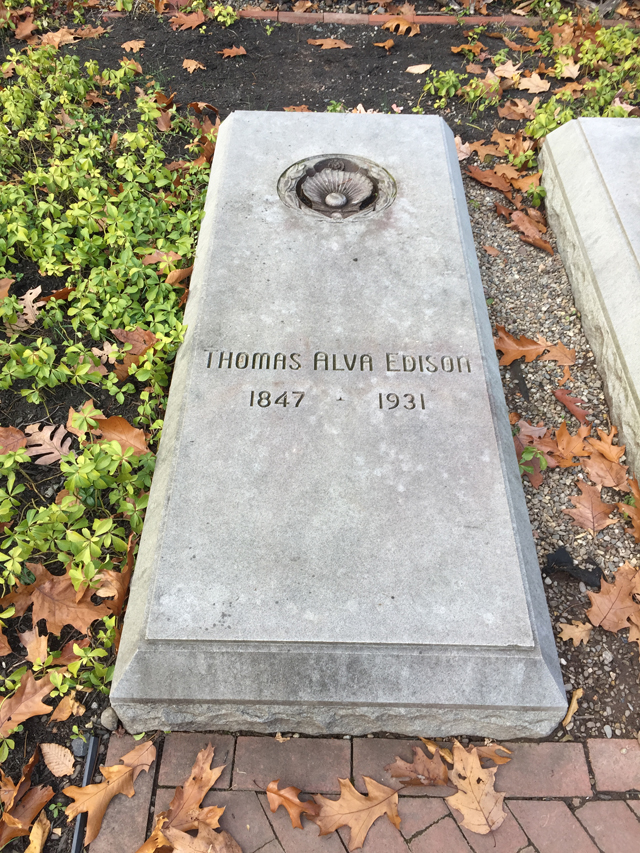
Edison’s burial place. He has yet to communicate from there.
Read more about the final chapter of The Diary and Sundry Observations of Thomas Alva Edison here.

